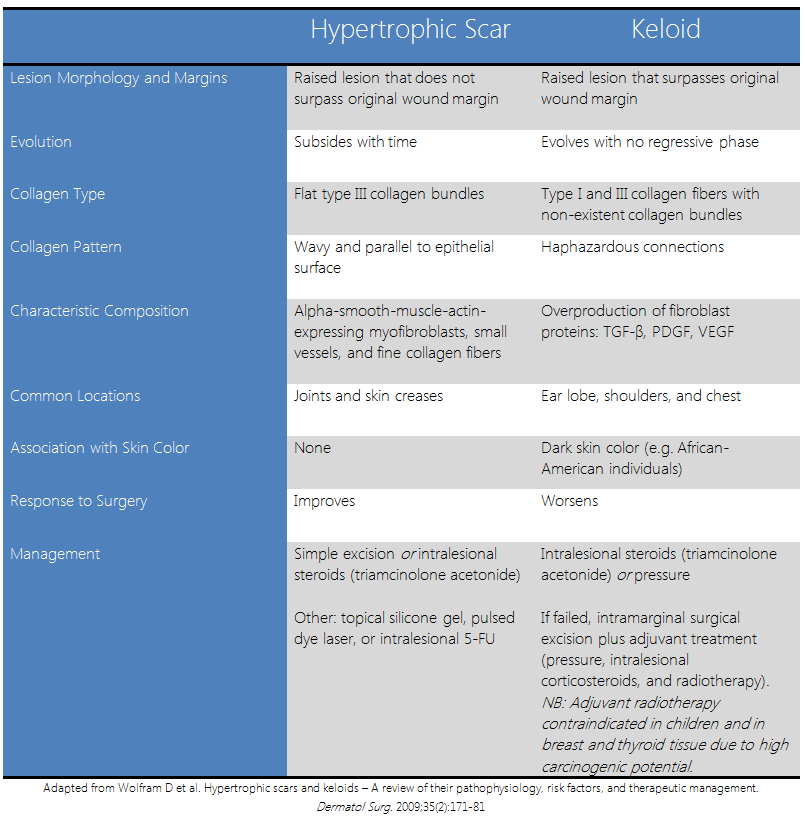WBR0294: Difference between revisions
Jump to navigation
Jump to search
YazanDaaboul (talk | contribs) No edit summary |
No edit summary |
||
| Line 10: | Line 10: | ||
|MainCategory=Pathophysiology | |MainCategory=Pathophysiology | ||
|MainCategory=Pathophysiology | |MainCategory=Pathophysiology | ||
|MainCategory=Pathophysiology | |||
|SubCategory=Dermatology | |||
|MainCategory=Pathophysiology | |MainCategory=Pathophysiology | ||
|SubCategory=Dermatology | |SubCategory=Dermatology | ||
| Line 43: | Line 45: | ||
Image: "Keloid, Trunk.JPG" by user:Htirgan, licensed under Creative Commons Attribution-Share Alike 3.0 Unported license. http://commons.wikimedia.org/ retrieved 1-Jan-2015.<br> | Image: "Keloid, Trunk.JPG" by user:Htirgan, licensed under Creative Commons Attribution-Share Alike 3.0 Unported license. http://commons.wikimedia.org/ retrieved 1-Jan-2015.<br> | ||
First Aid 2014 page 225 | First Aid 2014 page 225 | ||
|RightAnswer= | |RightAnswer=B | ||
|WBRKeyword=Keloid, Hypertrophic Scar, Scar, Collagen, Type III collagen, Scar formation, Burn, African-American | |WBRKeyword=Keloid, Hypertrophic Scar, Scar, Collagen, Type III collagen, Scar formation, Burn, African-American | ||
|Approved=Yes | |Approved=Yes | ||
}} | }} | ||
Revision as of 10:17, 13 October 2015
| Author | [[PageAuthor::Yazan Daaboul, M.D. (Reviewed by Yazan Daaboul, M.D.)]] |
|---|---|
| Exam Type | ExamType::USMLE Step 1 |
| Main Category | MainCategory::Pathophysiology |
| Sub Category | SubCategory::Dermatology |
| Prompt | [[Prompt::A 46-year-old African-American man presents to the physician's office for an abdominal lesion. He explains that he was involved in a fire accident 3 months ago and sustained a third-degree burn to the periumbilical area. As his wound was healing, he noticed the abnormal formation of scar tissue at the wound site (shown below). The patient also states that he has similar scar tissue that developed during healing of other wounds. What type of tissue is involved in the formation of this patient's scar? |
| Answer A | AnswerA::Type II collagen |
| Answer A Explanation | AnswerAExp::Cartilage, vitreous body of the eye, and nucleus pulposus are all examples of type II collagen. |
| Answer B | AnswerB::Type III collagen |
| Answer B Explanation | AnswerBExp::Both hypertrophic scars and keloids are mainly formed of type III collagen. |
| Answer C | AnswerC::Type IV collagen |
| Answer C Explanation | AnswerCExp::Basement membranes, basal lamina, and lens are all examples of type IV collagen. |
| Answer D | AnswerD::Type VIII collagen |
| Answer D Explanation | AnswerDExp::Type VIII collagen is a less abundant type of collagen that is present in some endothelial cells, mast cells, and keratinocytes. Examples of type VIII collagen are not high yield for USMLE Step 1. |
| Answer E | AnswerE::Type X collagen |
| Answer E Explanation | AnswerEExp::Type X collagen may be present in cartilage. Examples of type X collagen are not high yield for USMLE Step 1. |
| Right Answer | RightAnswer::B |
| Explanation | [[Explanation::The formation of hypertrophic scars and keloids results from the uncontrolled tissue repair and abnormal fibrous healing process of a wound. Patients with hypertrophic scars and keloids often present with cosmetic concerns, although the lesions may be pruritic or painful in the minority of cases. Although both hypertrophic scars and keloids are similarly the result of impaired repair process of the regeneration-regulating mechanism, they are clinically distinct and are managed differently. Thus, distinction between the 2 is crucial for optimal management.
|
| Approved | Approved::Yes |
| Keyword | WBRKeyword::Keloid, WBRKeyword::Hypertrophic Scar, WBRKeyword::Scar, WBRKeyword::Collagen, WBRKeyword::Type III collagen, WBRKeyword::Scar formation, WBRKeyword::Burn, WBRKeyword::African-American |
| Linked Question | Linked:: |
| Order in Linked Questions | LinkedOrder:: |

